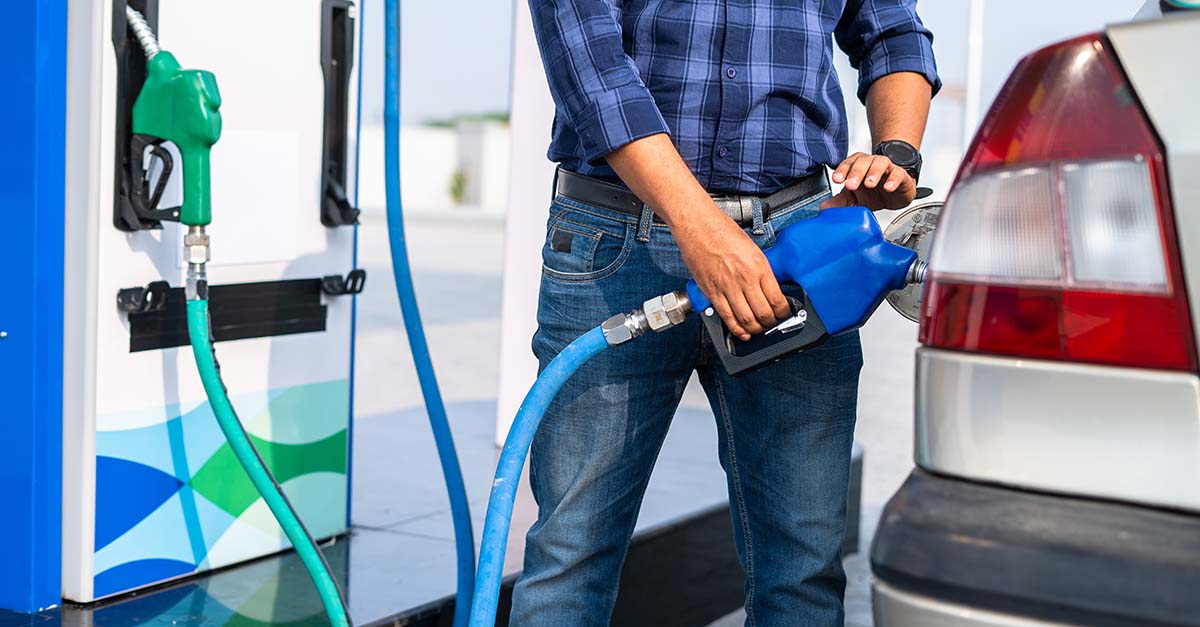Fuel Trends by Upside: Methodology and FAQs
Take a closer look at how we built our Fuel Trends data series.

Dr. Thomas Weinandy
With tens of thousands of retailers in the Upside marketplace, we have the unique ability to gather regional and national insights that are relevant to retailers. We’ve launched this Fuel Trends series in order to give retailers an in-depth look at what’s happening in the markets around them, with expert commentary to contextualize those industry trends.
The data in this series comes from the largest single dashboard of combined fuel and c-store industry data in the country, compiling figures from transactions at more than 20,000 sites across America. As a resource tracking more than a dozen metrics for both fuel stations and c-stores, there’s nothing else like it in existence today.
With this data, we will create content that gives readers insight into what's happening in retail fuel and helps retailers benchmark their own performance against the market.
Our methodology
Upside’s Fuel Trends series is designed to ensure data security, privacy, and quality. To do that, we:
- Analyze transaction data. Our analysis begins with anonymized item-level transaction data from Upside’s partnering stations and c-stores. That transaction data includes the prices consumers pay, descriptions of the items purchased, units (for example, fuel gallons or a particular c-store item), and a timestamp of the transaction.
- Aggregate to ensure anonymity. Using that information, we categorize the items by fuel or c-store, and we aggregate the data to create a general picture of how the average site performs on the average day. Then, we aggregate again up to various geographic levels and across various time horizons. This data aggregation allows us to make conclusions about larger regions, and it also helps us to ensure that the data from individual retailers is fully anonymized.
- Exclude compromised markets. As we aggregate, we’re checking to see if there is one retailer that is overrepresented in a particular market. If so, we exclude some of that retailer’s sites to ensure they do not make up more than 25% of all sites within an area. We also ensure there are at least 25 sites in a market to ensure we can accurately represent a given geography. If either of the above is not met, then we exclude an affected geography completely.
Upside believes strongly in protecting the privacy of our retail partners. We never sell any of the data that we collect, because our relationships with retailers and app users alike are built upon trust. Maintaining that trust is of the utmost importance to us.
Frequently asked questions
1. What data is included?
We’re analyzing fuel transactions (regular, midgrade, premium, and diesel) and c-store transactions from more than 21,000 stations and c-stores. Our lookback window is the previous 110 weeks to create comparisons from the previous two years.
We’re tracking the following metrics, each aggregated to the average site on the average day: transactions, revenue, units sold, revenue per transaction, revenue per unit, units per transaction, sign price, rack price, profit margin (fuel only), Upside offer, pump to c-store ratio, number of sites used to calculate a measure, and number of retailers used to calculate a measure.
2. Can I get access to this tool to manipulate the data myself?
Not right now. Our team is working on making the dashboard available to the public. First, we need to better understand what’s most valuable to retailers to help guide our next steps.
3. Can I look up data for a specific retailer?
No. In order to protect retailer privacy, we’re only making the aggregated, anonymized data available.
4. How can I get more localized data for my area?
We’re happy to help you with insights related to your region! Reach out to our industry experts for an answer to a specific question. Journalists are also welcome to contact our press team.
5. Why are some states and cities missing?
In short, we need to exclude some regions from our analysis in order to protect retailer privacy. Here’s some more context:
As we aggregate the data, we conduct a few checks to ensure that no retailers are overrepresented in their market. For that reason, if a retailer’s sites make up more than 25% of all sites on Upside within a given area, we’ll exclude some of their sites to ensure they fall below that 25% threshold, or exclude that region entirely from our analysis.
Additionally, we need to ensure that we have enough sites in every market to accurately represent the landscape. If we don’t have at least 25 sites on Upside overall in a market, we exclude the affected geography completely. These checks ensure that the data is anonymous and reflects the truth in each region.
6. How can I be sure this data is accurate?
The data from our tracker is only useful if it is reliable and accurately reflects the real world.
In order to assure data quality, we enforce a minimum number of sites in an area to ensure averages are representative of the region. We filter the data down to the item level to properly define transaction types. Overall, we are committed to publishing the most accurate, relevant data possible.
7. What safeguards are in place to ensure data privacy and security?
We take a few steps to ensure that these metrics are fully anonymized. First, we conduct two aggregations — starting with our raw item-level data, we aggregate to create a picture of the average site on an average day. Then, we aggregate again to wider geographic levels and time horizons. These aggregations prevent the data from being cross-filtered or de-anonymized. Additionally, we exclude geographies within which a single retailer has a high concentration of sites.
Upside believes strongly in protecting the privacy of our retail partners. We never sell any of the data that we collect, because our relationships with retailers and app users alike are built upon trust. Maintaining that trust is of the utmost importance to us.
8. [Industry specific] Why are sign prices generally lower in the winter?
There are two reasons that consumers generally pay less for fuel in the winter: changing fuel blends and changing demand.
- Changing fuel blends: All American stations use two different kinds of fuel throughout the year: a cheaper winter blend and a more expensive summer blend. The annual changeover keeps cars running smoothly throughout the year while reducing pollution that occurs in hot weather. When stations switch from the more expensive summer blend to the winter blend of fuel, sign prices see a resultant decrease. Likewise, prices increase in the spring when the reverse happens.
- Changing demand: Fuel demand is at its highest in the summertime, when the majority of Americans plan vacations or road trips. The increased demand helps to push prices up during peak driving season from June to August. Demand is lowest in the wintertime, when fewer people are logging longer-than-usual distances.
9. [Industry specific] Shouldn’t fuel margin just be the difference between rack price and sign price? What other factors are at play there?
Fuel margins are calculated by subtracting costs from revenue. Revenue is reflected in the sign prices that customers pay, while costs include a few factors in addition to rack prices. Retailers also pay for marketing, local taxes, and transaction fees; although small, these costs change margins slightly.
10. [Industry specific] Why do results differ by region? Why aren’t the numbers more consistent across the United States?
Fuel prices aren’t more consistent across the United States because each state imposes different regulations and taxes that can alter the price of fuel.
In California, for example, prices are generally higher than the rest of America. For one, California has the highest gas taxes in the country. California also has strict emissions standards, ones which require a special blend of fuel unique to the state. That blend comes from only a few oil refineries in the region, and its relative scarcity increases the cost for consumers.
Additionally, weather can cause disruptions that affect a specific region only. For example, the Southeast faces an annual hurricane season. When inclement weather disrupts the fuel supply chain for stations in the region, sign prices generally go up — but the supply chain for stations in other regions, like the Midwest, would be unaffected in that scenario.
Share this article:
Dr. Weinandy is a Principal Research Economist at Upside, providing valuable insights into consumer spending behavior and macroeconomic trends for the fuel, grocery, and restaurant industries. With a Ph.D. in Applied Economics, his academic research is in digital economics and brick-and-mortar retail. He recently wrote a book on leveraging AI for business intelligence.
Request a demo
Request a demo of our platform with no obligation. Our team of industry experts will reach out to learn more about your unique business needs.










.png)




